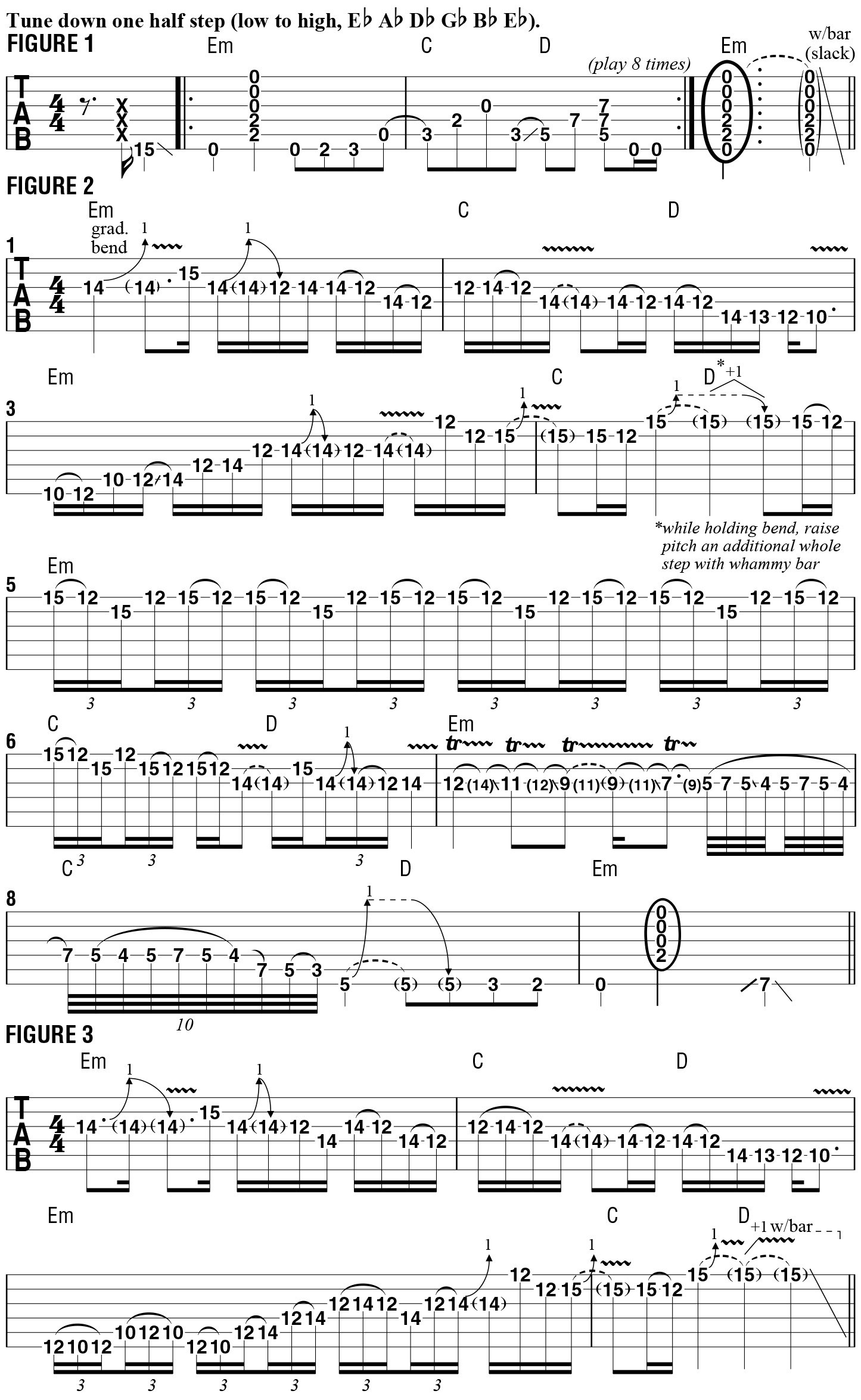Nita Strauss shows you how to play Alice Cooper’s I’m Eighteen guitar solo
Nita Strauss dishes on how she approaches the iconic solo in Alice Cooper’s I’m Eighteen
Hi, everyone—welcome to my new Guitar World column! Over the course of these lessons, I will demonstrate many of the techniques and concepts I use in my guitar playing. For the last four years, I have been touring with rock legend Alice Cooper, and one of the songs that we play at every show is “I’m Eighteen.” One of the coolest things about playing this song every night is that Alice gives me a lot of freedom to play whatever I like for the solo section. Many of the classic Alice songs have these iconic solos that I will follow to the letter, but for this one, I’m free to experiment, do my own thing and devise something that I think will add to the song.
FIGURE 1 illustrates a rhythm guitar part along the lines of what I play my solo over. Starting with an open Em chord, you walk up the low E string to set up the arpeggiated C chord, followed by D5. After playing this two-bar phrase eight times, sustain the Em chord and drop the pitches of all of the strings with the whammy bar.

This simple, repeating two-bar progression is perfect for playing a solo that sticks with either the E minor pentatonic scale (E G A B D), the E blues scale (E G A Bb B D) or E natural minor (E F# G A B C D), also known as the E Aeolian mode. FIGURE 2 presents the guitar solo in its entirety. In bars 1-6, the lines are based on E minor pentatonic, played mostly in 12th position, with a momentary shift down to 10th position at the end of bar 2.
This solo is intended to be melodic and memorable and is phrased primarily in 16th notes, with clearly defined hammer-ons, pull-offs and slides, as well as a few bent vibratos (bars 1 and 3). When performing each bent vibrato, be sure to zero-in on the target pitch of the bend first, then apply the vibrato by partially releasing and re-bending the string in a quick, even rhythm. On beat three of bar 4, the bend from the high G note up to A is raised an additional whole step with the whammy bar.
Bars 5 and 6 are built from a repeating 16th-note triplet shape that descends through E minor pentatonic, one scale degree at a time. The solo wraps up in bars 7 and 8 with a series of descending G-string trills down through the E natural minor scale. When I get to the fourth fret, I repeat quick pull-offs and hammer-ons between the seventh, fifth and fourth frets before ending of the solo on the low E string.
Lately, I’ve been adding more hammer-ons and pull-offs in bars 3 and 4, as shown in FIGURE 3. My attitude is “more is more!” and I think this is a good example of that.
Nita Strauss tours regularly with Alice Cooper and has her own all-female band, We Start Wars. Visit nitastrauss.com for more info.
Get The Pick Newsletter
All the latest guitar news, interviews, lessons, reviews, deals and more, direct to your inbox!









![Joe Bonamassa [left] wears a deep blue suit and polka-dotted shirt and plays his green refin Strat; the late Irish blues legend Rory Gallagher [right] screams and inflicts some punishment on his heavily worn number one Stratocaster.](https://cdn.mos.cms.futurecdn.net/cw28h7UBcTVfTLs7p7eiLe.jpg)
